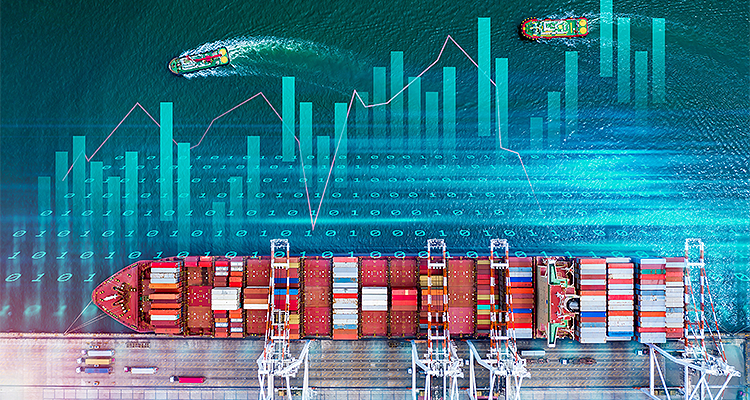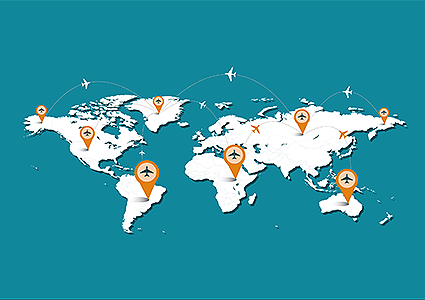
How to turn supply chain disruption into an advantage.
Reading the news at the moment, it seems that supply chain disruption is on the front page every day. Over the last few years, we have had Covid, labor shortages, shipping costs, raw materials price increases, a blockage of the Suez Canal and significant increases in energy costs.
At the same time, there is a significant pressure on prices, as the cost-of-living increases from 2022 are hitting spending by retailers and consumers, so there is a relatively small scope to increase prices to off-set the impact of the disruption.
 It is now more important than before to really keep an eye on what drives profitability, and real customer value. Most businesses have the data to look at this in detail – at customer, product and individual order line level. It is amazing how much value can be leveraged through this data, and how quickly it can be turned into cash.
It is now more important than before to really keep an eye on what drives profitability, and real customer value. Most businesses have the data to look at this in detail – at customer, product and individual order line level. It is amazing how much value can be leveraged through this data, and how quickly it can be turned into cash.
The pareto effect (for instance 20 percent of your products represent 80 percent of your turnover) is well known. But the same effect is typically extended by looking at profitability – we have seen examples when fewer than ten percent of customers represented 95 percent of profit, 60 percent of customers were marginal, and 15 percent of customers significantly destroyed profit.
Supply chain costs are typically a large proportion of the total cost base, including materials, inbound, on-site and outbound freight, packaging, materials handling as well as the management costs such as demand and supply planning.
Driving performance
Particularly in a time when businesses are under pressure, focus is critical. But how do you know what the focus should be, and equally, which parts of the business might best be lost? It turns out that the analytics can be done relatively quickly – typically in about eight-to-14 weeks – by combining process understanding, existing operational, commercial and financial data and business understanding.
Traditional accounting can sometimes get in the way of making these decisions. A typical P&L system is set up to control costs, typically by department or function, rather than evaluating value derived from the activities. And cost reporting is typically done at an aggregate level, which masks averages.
Cost-to-Serve®, a BearingPoint methodology and tool, allows this financial data to be transferred into an assessment of activity profit, allowing managers to assess carefully how making changes to their operating procedures and focusing on specific products, customers or activities, will drive their business performance.
But that analytics is only the starting point. The real question is how you can leverage the outputs from the analytics and drive the business forward. This means investigating the reasons behind the outputs – why are certain activities adding to profit and cash, and why are others destroying it.
Transformational analytics
It is a real eye-opener to see where customers and products that are seen as similar, result in a different profitability. Recently, a food manufacturer assessed their different customers and found that the four big food retailers have very different distribution networks, and relative transport costs varied by more than 100 percent. The business understood the implication of distance to depot, but the analysis showed huge differences in the order frequency and sizes, that were not included in price negotiations.
Production batch size is another interesting example. Lean manufacturing has led to a real focus on process costs, but the end-to-end profitability might be impacted. For another food manufacturer, the right application of lean had resulted in low costs per unit for fast moving products; however, the large batch sizes and resulting inventory and waste for slow moving products had far exceeded the production benefits. Separating lines between high volume and high flexibility resulted in a significant cost saving, reduction in inventory, and increase in overall profit.
impacted. For another food manufacturer, the right application of lean had resulted in low costs per unit for fast moving products; however, the large batch sizes and resulting inventory and waste for slow moving products had far exceeded the production benefits. Separating lines between high volume and high flexibility resulted in a significant cost saving, reduction in inventory, and increase in overall profit.
And we worked with a wholesale business that had a significant number of loss-making accounts. By putting in place a number of cost-saving measures and price increases, specifically targeting these accounts, profit increased without putting their core accounts at risks.
The common theme is that these were businesses that were well run but didn’t have the clarity to understand how a large number of relatively small decisions, customer behaviour and processes, had a disproportionate effect on profit.
End-to-end projects often fail to deliver value, as they are typically difficult to manage, cross-functional and involve stakeholders across businesses. By highlighting the overall value that can be delivered, the analytics become an ‘independent’ element, and removes the political nature of these projects and the perceptions of the different stakeholders. By measuring the start point, assessing the opportunities and creating a change plan that is driven from the end-point, and then tracking the benefits on an on-going basis, these analytics can truly transform the performance of a business.
For a list of the sources used in this article, please contact the editor.
Emile Naus
Emile Naus is Partner at independent management and technology consultancy, BearingPoint. With European roots and a global reach, the company operates in three business units: Consulting, Products, and Capital. Consulting covers the advisory business with a clear focus on selected business areas. Products provides IP-driven digital assets and managed services for business-critical processes, and Capital delivers M&A and transaction services.